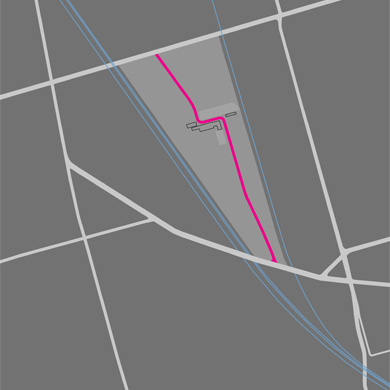Deleted Buildings
When we found the space that was to become our office, five short months ago, it was somewhat familiar territory. I lived close to Sterling Road in the past and used it as a shortcut on the way an old job. It’s a bit of an odd street: highly industrial and quickly traversed. The long straight road with a couple curves seemed to invite fast automobile traffic and it was surrounded by working factories. It was always a route and not a destination (see slide 2).
Six years later, I come here everyday. There are big redevelopment plans afoot now and I’m excited to see the neighbourhood transformed. It got me thinking, though, about how the area is different now and why.
To make way for the redevelopment and as part of the site remediation, several old industrial buildings have been removed (see slide 3).
These buildings formed bookends for the short jog on Sterling. I do miss them now but I had to think about why exactly. I’m not overly sentimental about old buildings: in the past, I’ve been involved in heritage debate and advocated to take down an old house to make way for something much better. I believe that any city should be in a continual process of renewal to stay vital.
Why do I miss the buildings? It has nothing to do with what was going on inside of them: one was a factory and the other likely storage. They weren’t especially unique looking either. Other than an interestingly residential roof pitch on the factory building, both were of fairly typical red brick construction.
I came to the realization that they worked together with the curve of the street to define a unique space at street level. In a way, that section of Sterling was like an outdoor room with a clearly defined entrance and exit. The walls of the buildings became borrowed walls for a void that screened and revealed views as one travelled Sterling.
This leads me to another realization about the discussion regarding preservation in cities. Maybe what’s more important is to look at the shape of the urban fabric – the grain and texture of buildings – than to focus on individual buildings themselves. While there will always be important buildings of architectural significance, it’s equally valid to avoid sentimentality. A city needs to adapt to ever changing uses. However, consideration for the shape of the city – looking at the form as well as the size of buildings – could be a way to think about preservation that applies to areas that don’t feature individual heritage buildings.
There is more information about the redevelopment of the area here. I’m interested to see how things shape up.


